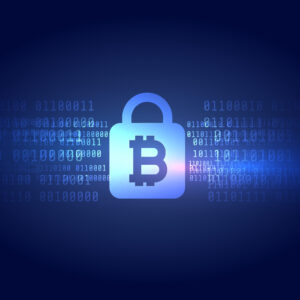What are NFTs? How Do They Work
Non-Fungible Tokens (NFTs) are digital assets that use blockchain technology to store and verify ownership. When a person owns this digital asset, records such as details about the owner, transaction history, and metadata are stored on the blockchain, ensuring the asset’s security.
Non-Fungible means this digital asset has unique properties, meaning only one original copy exists. NFTs can be in the form of digital artwork or gaming assets, but interestingly, a new use case has emerged – NFT real estate, which represents real-world physical properties. These digital assets can be traded on NFT marketplaces, allowing investors to make a profit or utilize them in blockchain games. In this guide, you will find out how to trade NFTs on marketplaces.
Getting Started
Before trading NFTs, you need to select a suitable NFT marketplace and decide the type of NFTs based on your interests. There are several NFT niches, each serving different use cases, including artwork, gaming assets, music, and more. If you’re into gaming, gaming NFTs might be the right choice for you.
NFT marketplaces are blockchain-based platforms deployed on networks like Ethereum, where users can buy, sell, and trade NFTs. Popular marketplaces include OpenSea and Rarible, which offer a wide range of NFTs across different categories. Additionally, you can create your own NFTs and list them for sale on these platforms.
To conduct transactions on NFT marketplaces, you’ll need a crypto wallet that supports NFTs, such as MetaMask or Trust Wallet.
Creating a Crypto Wallet
MetaMask is a suitable wallet due to its integration with multiple NFT marketplaces, support for Ethereum-based NFTs, and its useful built-in swap feature. Follow these steps to create a MetaMask wallet:
- Simply visit the official website and download the browser extension or mobile app.
- Open the application, select “Create Wallet,” and set a strong password.
- Write down and securely store the secret recovery phrase provided by MetaMask. Keep this phrase confidential to ensure the safety of your wallet.
- Now, you can add funds to your wallet through multiple methods. You can purchase crypto (such as ETH) using a bank transfer or credit card, or transfer crypto from an exchange.
- For the latter method, go to your exchange account, select “Withdraw” or “Send Crypto,” paste your MetaMask wallet address, choose the correct network (Ethereum, BSC, etc.), and confirm your transaction.
Trading NFTs
Once you are on an NFT marketplace like OpenSea, you can connect your wallet by signing in with your wallet account. You will need funds in your wallet to complete transactions on OpenSea.
If you plan to purchase an NFT, there are two methods, each with different risk factors and benefits.
- You can purchase an NFT instantly by selecting the “Buy Now” option once you choose a specific NFT. The payment is made in ETH or USDC, and once the transaction is completed, you instantly own the NFT.
- The second method involves bidding in an auction, where you place a bid using Wrapped ETH (WETH) and wait until the auction period ends. The highest bid at the end of the auction wins the NFT, but if another bidder offers more, you may lose the NFT.
Although the Instant Buy method appears less risky, there are still risks involved, similar to those in cryptocurrency trading. If, after purchasing an NFT, the floor price drops due to high selling volume, your NFT may depreciate in value. To make more informed buying decisions, check the recent sales history or use tools like NFT Price Floor. Additionally, it is important to remember that NFT marketplaces charge a transaction fee on purchases and sales.
If you want to sell an NFT on OpenSea, navigate to “Collected”, select the NFT you want to sell, and choose a Fixed Price (Buy Now) for a quick sale or an Auction for selling rare or high-demand NFTs. Then, set the duration of the sale and wait for a buyer. Once the NFT is purchased, the crypto will be transferred to your wallet automatically.
Ensuring Security of your Assets
Ensuring the safety of NFTs involves a combination of practices, including choosing a secure and reputable wallet, enabling two-factor authentication (2FA) on your NFT marketplace account, and avoiding phishing attacks.
Phishing attacks occur when a user connects their wallet to a fake website that looks like a real NFT marketplace, giving hackers access to the user’s wallet credentials. Often, hackers send fraudulent emails to users, directing them to such fake websites. To avoid phishing attacks, be cautious of such emails and fake websites.
For high-value NFTs, you can choose hardware wallets like Trezor. These wallets are physical devices not connected to the internet, keeping your assets safe. By following these practices, you can ensure the security of your assets.


